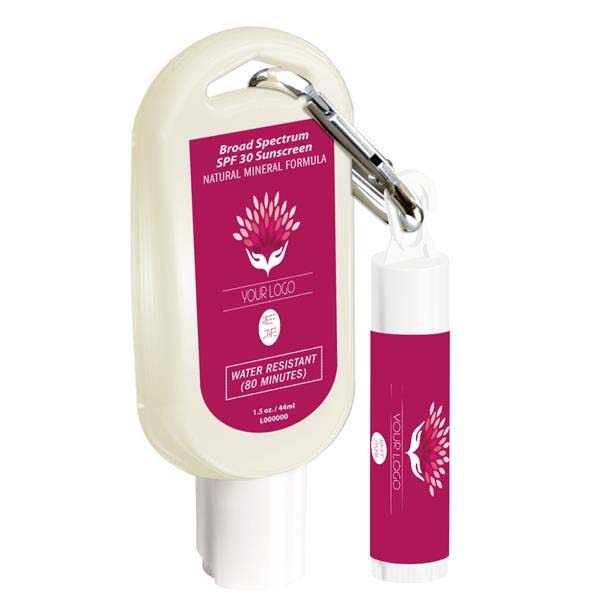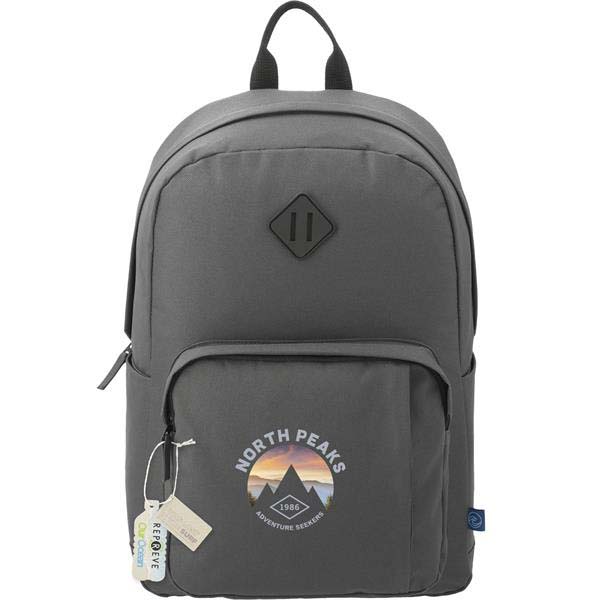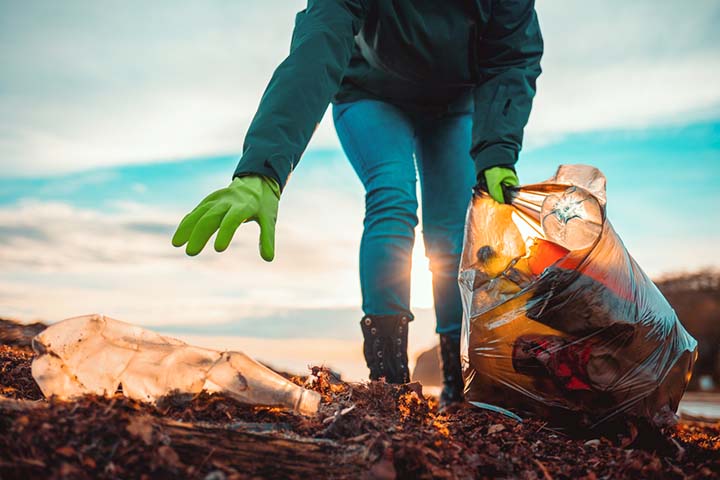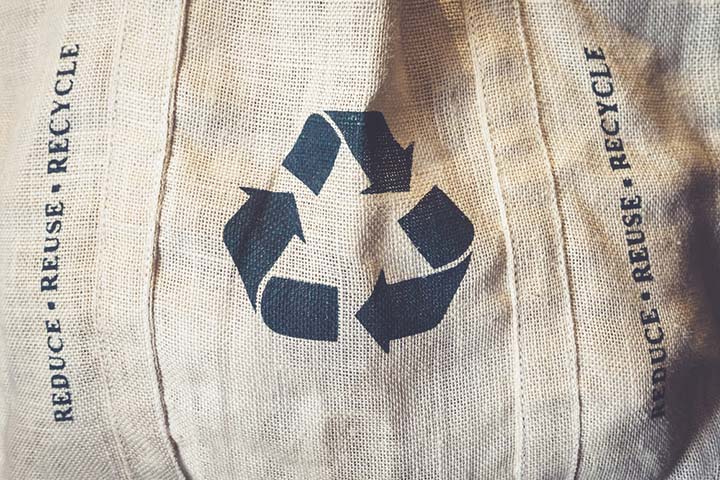Sustainability July 01, 2022
6 Ways Promo Can Help Protect the Ocean
As beach season heats up, consider these strategies to reduce pollution and help marine life thrive.
The ocean waters enjoyed by thousands, home to beloved beaches and unique marine life, also end up being home to 14 million tons of plastic each year. The ocean is Earth’s largest ecosystem and the planet’s life-support system – when it suffers, everyone feels the consequences. The Great Pacific Garbage Patch is growing; research shows that by 2050 the amount of plastic in the ocean will outweigh the fish. To ensure a sustainable future, everyone in every industry needs to do their part in protecting the ocean.
When it comes to helping safeguard the seas, the best ideas include: refuse the use of harmful pollutants; rethink how commonly used products can become sustainable; redesign business operations; and conserve materials or donate to ocean-conservation efforts.
Here are six ways the promo industry can help preserve the ocean by encouraging clients to rethink, refuse, redesign and conserve.
1. Opt for Mineral-Based Sunscreens

Raining Rose (asi/80489) offers this mineral-based sunscreen and lip balm combo (COMBO-MSSLB) – a better choice for protecting ocean life.
Applying plenty of sunscreen is one of the first steps many take before heading to the beach on a hot day. And while it’s a great summer promo staple, sunscreen often contains chemicals that are harmful to marine life, including oxybenzone and benzophenone-1, among others, which enter waterways when washed off in the shower or while swimming in the ocean. These chemicals could impair the growth of green algae, deform young coral, decrease reproduction in fish and more.
To further efforts to protect the ocean and consumers, recommend mineral-based sunscreens, which often use zinc oxide and titanium dioxide. Raining Rose (asi/80489), an Iowa-based supplier that manufactures many USDA organic personal care products, is one choice for mineral sunscreen and lip balm.
2. Choose Items Made From Recycled Ocean Plastics

This computer backpack (3900-01) from Leed’s (asi/66887) is made from recycled ocean plastic.
A number of suppliers have incorporated recycled polyester into apparel and other promo products in recent years. A few companies, however, have taken the concept a step further, sourcing ocean and ocean-bound plastics. Leed’s (asi/66887), a division of Top 40 supplier Polyconcept North America (PCNA, asi/78897), for example, offers a line of bags made from REPREVE Our Ocean – a synthetic fiber made from ocean-bound plastics certified by an independent third-party organization.
Outside the promo industry, more and more brands are offering similar products. Waterhaul makes sunglasses out of 100% recycled fishing nets. Prevented Ocean Plastic collects plastic from coastal areas at risk of ocean pollution and recycles it so it doesn’t end up in the ocean.
3. Avoid Apparel With Microplastics

100% organic cotton apparel, like this classic tee (EC1000) from econscious (asi/51656), help avoid the issue of microplastic shedding that affects some performance wear.
While bottle caps, plastic bottles and single-use bags are some of the more obvious and prevalent pollutants found in the ocean, microplastics can be just as – or even more – harmful, especially considering that many people are unaware of the everyday products that contain them.
These plastics, which are 5 millimeters or smaller in diameter, are often added to personal-care products like toothpaste and skin exfoliants. Plus, fleeces, leggings, outdoor gear and other clothing that contains acrylic, polyester, polyamide, spandex and nylon shed up to 700,000 microfibers with each wash. These microplastic-containing fibers end up airborne, settling as dust that can be inhaled, or bypass water-filtration systems and end up in the ocean where they could be eaten by marine life. Once consumed, microplastics can block an aquatic animal’s intestinal tract, negatively impacting the entire ocean.
To help lessen the damage, consider sourcing apparel made from natural and organic fibers, rather than synthetic materials. Many industry apparel suppliers offer lines of 100% cotton apparel, and several, like econscious (asi/51656), feature a lineup of certified organic clothing.
4. Choose Bamboo Over Plastic

This cutting board (20-6906) from Totally Bamboo (asi/91565) is made of flat-grain bamboo.
Ultimately, less plastic manufacturing and distribution will help to limit pollution in the environment and ocean. When it comes to sustainable materials that successfully replace traditionally plastic promo product favorites, bamboo is a great choice for everything from pens to eating utensils to summer-must-have sunglasses.
Many consider bamboo to be the G.O.A.T. (greatest of all time) of sustainable, eco-friendly materials. It’s completely biodegradable, solid, durable, highly renewable and requires no pesticides to grow. Another plus: The smooth, wood-like appearance of bamboo-made products is elegant and upscale. Bamboo textiles and apparel are also popular, though there are disputes about whether their manufacturing processes are actually sustainable.
5. Support Ocean Conservancy Groups

Donating to an ocean conservation organization is a simple yet powerful way the promo industry can make strides toward protecting the ocean. The Environmental Defense Fund (EDF) is an environmental conservancy group that does substantial work for ocean conservation concerns. Specifically, the group advocates for sustainable fisheries, habitat preservation and slowing pollution.
Oceana is an international advocacy group that directs its efforts solely to ocean-related issues. Among many other projects, Oceana has helped to limit ocean pollution and protect vulnerable marine life.
Parley for the Oceans is a unique group that invites volunteers from all backgrounds to help support its cause. Scientists, artists, environmentalists, musicians and more are enlisted to help limit plastic pollution in the ocean.
6. Create Eco-Friendly Marketing Campaigns

Lastly, saving the ocean doesn’t have to be an initiative solely created for an Earth Day marketing campaign. Get creative with promotions and product suggestions by regularly including eco-friendly, sustainable items that help protect the ocean. You – and your clients – can also create a giveback program where you pledge a portion of your profits (perhaps through an organization like 1% for the Planet) to protect the oceans, and feature the program in all marketing efforts.
After all, 46% of consumers have a more favorable opinion of an advertiser if a promo product they received is environmentally friendly, according to the 2022 ASI Global Ad Impressions Study.

Promo for the Planet is your destination for the latest news, biggest trends and best ideas to help build a more sustainable and socially-responsible industry.
